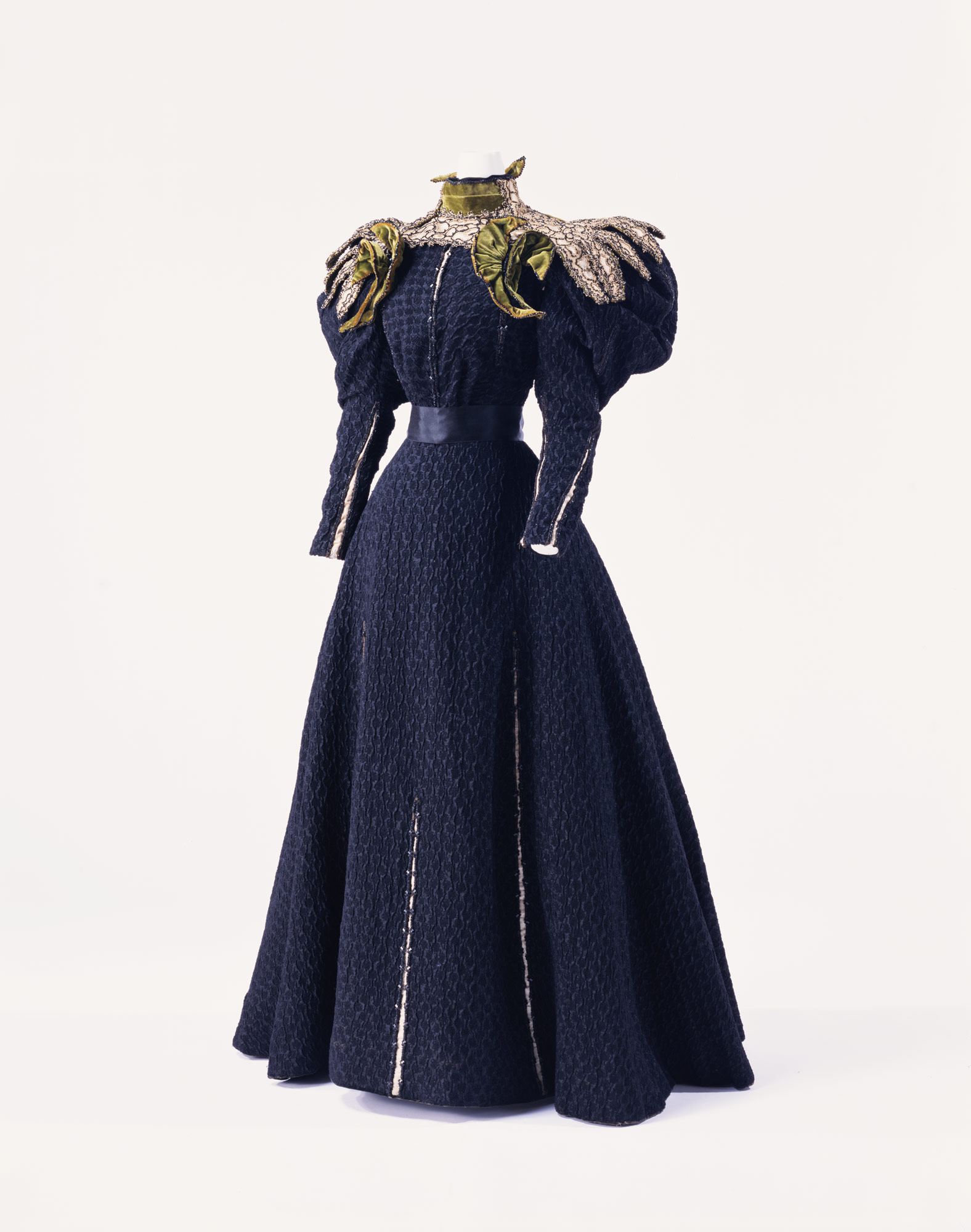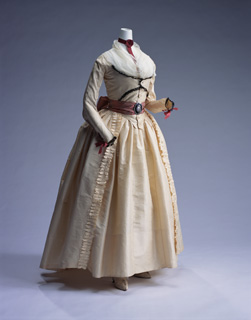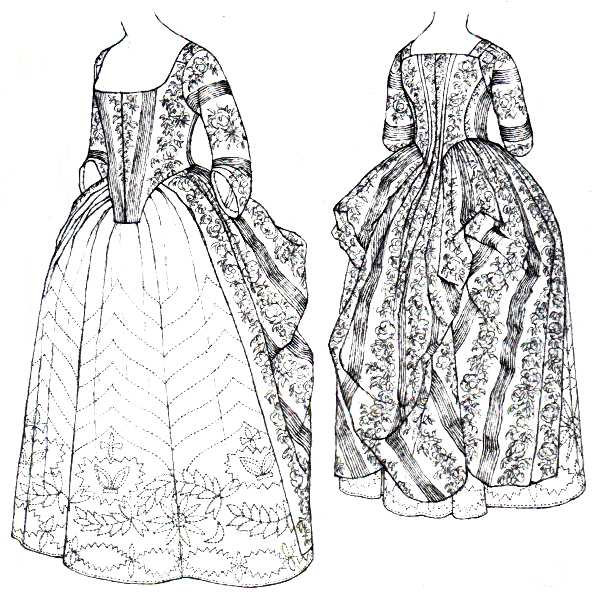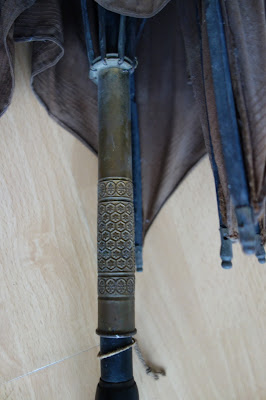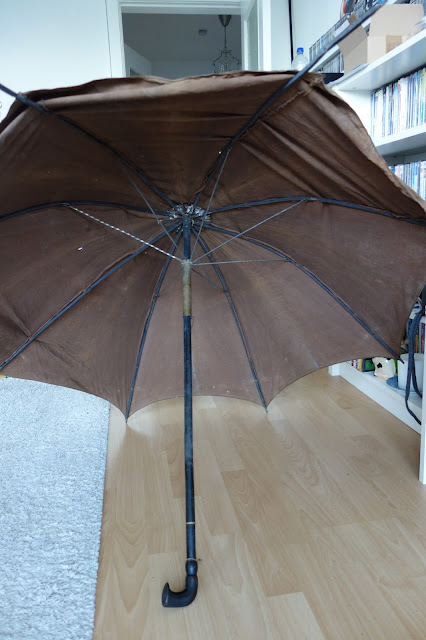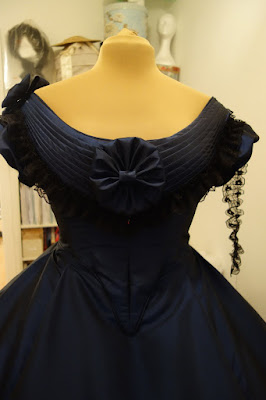Today is the day I created the biggest mess ever in my sewing room.
Don't ever cut open a down duvet!! Feathers everywhere!
I am not sure why, but I obviously avoided blogging lately. I just couldn't bring myself to write anything. So naturally I do have a lot of catching up to do, because I certainly did not avoid sewing.
Aside from the feather incident my latest project was a corset I've been longing to recreate:
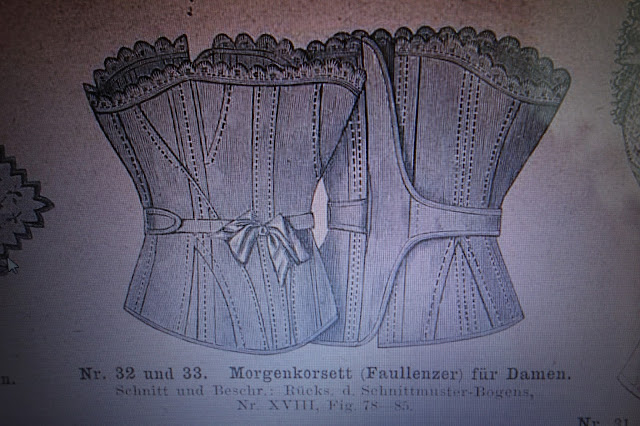 |
| Faullenzer; Der Bazar No 27, 10. Juli 1893 |
Modern german would actually skip one L and call it Faulenzer... It is a corset for negligé wear, without clasps or lacing, but instead a belt which laps at the back and ties at the front.
The reason I liked this corset so much is the super simple belt fastening instead of lacing. I took the pattern off the original pattern sheet from my Laptop screen, since I don't have a printer and wasn't patient enough to wait for a commercial pattern to arrive at my doorstep.
No kidding:

After taking the pattern I enlarged it with my 1930s Frohne tool and make a mock up.
The original pattern is super short waisted so I made some adjustments and also shortened the bust gussets.
 |
| Pattern- Der Bazar No 27, 10. Juli 1893 |
The sewing instructions given with the pattern are as follows:
Für dieses lose und doch dem Körper Halt gebende Korsett schneidet man aus Drell nach Fig. 78-83 und 85 je zwei, nach Fig. 84 einen Teil (Der Stoff für die Nähte ist ugegeben), verbindet die Teile miteinander, wobei jedoch am rechten hinteren angesetzten Teil von Stern bis Stern ein Schlitz frei bleibt, führt je die vorgezeichnete Falte aus und steppt dem Korsett auf der Außenseite längs der vorderen Naht, sowie je am hinteren Rande für Stahlstangen und Fischbeine Stoffstreifen auf. Hat man den übrigen Teilen, den Vorzeichnungen folgend, Bänder für die Fischbeine untergesteppt, so näht man die Gurtteile von 61 bis 62 an der linken Seite der Fig. 84, an der rechten Seite der Fig. 82 gegen, fasst das Korsett mit Band ein, verziert es mit einem bestickten Börtchen, bringt an den äußeren Seiten der Gurtteile Bänder an und schließt das Korsett, indem der linke hintere Gurtteil durch den Schlitz geleitet und die Bänder vorn zusammengebunden werden.
Roughly translated...
This loose but supproting corset is cut from drill, pieces 78-83 twice, piece 85 once. Connect all pieces but leave a slit between the stars, sew the dart as indicated and add strips of fabric at centre front and back on the outside for steels and fishbone and add all other strips as indicated. After this is done add the belt to piece 84, bind the corset and embellish it with embroidered lace, add laces to the belt and tie it at the front by bringing the left belt through the slit .
The pattern actually pointed out where to use steels and baleen...
I made my corset from the same materials as my 1876 corset. Cotton drill, satin binding, twill tape, silk flossing and bobbin lace as trimming. Steel was used where indicated on the pattern. All other boning is german fishbone.
The gussets are reinforced with buttonhole stitch in silk thread. I used Black Gold Needles from Clover and broke the first one after two stitches! Needless to say I was super annoyed. Not just because the needle broke, but because they were really expensive as well...

 |
| Lace pinned on |
 |
| all finished:-) |
 |
| 1893 Morning Corset - Front |
 |
| 1893 Morning Corset - Side |
 |
| 1893 Morning Corset - Back |

 |
| 1893 Morning Corset |
 |
| 1893 Morning Corset |
Although it is a corset, it really isn't possible to "lace" it super tight. If you do the steels at the centre back will start to bend, since they're only pulled from the middle. This way there will be no even lacing gap and the "Faullenzer Feeling" will be gone.
Now that I made this morning corset I am planning to sew a morning gown to go with it. With enormous 1890s sleeves, of course!
See you soon!





